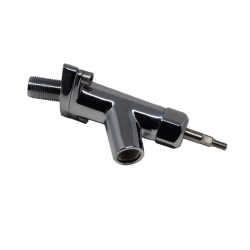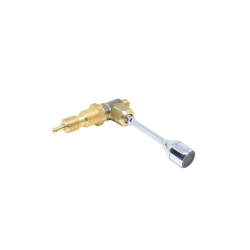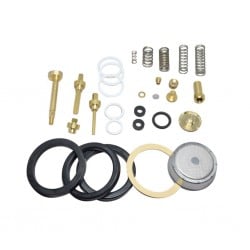Espresso machine parts
Our assortment
At Brooks-Parts we have a wide selection of spare parts for espresso machine and coffee grinders. This ranges from coffee grinding burrs for coffee grinders to espresso machine pumps and all their related products. This can be OEM/Original spare parts or non original.
Lead times and warranty
For the most standard items you don’t have to worry about the lead times, seen we stock them or we can supply them in a couple of days. But when you have more uncommon items OEM or not, the lead times can be quite long, this does varies per brand.
What are the main components on a espresso machine/coffee grinder
All the products on a espresso machine are main components, but in general there are a variety of spare parts which can be found on every espresso machine. You need to think of portafilters, solenoid valves, pump motors and electrical dosing devices.
Are there espresso machine parts which wear out fast
Yes there are quite some spare parts which require a lot more maintenance then others. The best examples are the gaskets on espresso machines, these wear out over time or just dry out due to the heat of the brewing group. A other component which are also common to wear out, are the portafilters on the espresso machine. That has to do with the ears of the portafilter, these do slowly wear down over time. This does depend on how often the espresso machine is used.
Espresso machine maintenance in 5 easy steps
If you want to keep your espresso machine in the best working condition you want it might be handy to follow the 5 steps below .Invest in some cleaning products for your espresso machine, it’s not cheap but having your espresso machine fixed by someone else is even more expensive.
Daily cleaning
The daily cleaning of a espresso machine can be divided into 2 tasks. Cleaning the outside of the espresso machine and coffee grinder, don’t forget to clean the drip tray on a daily basis. And cleaning your brewing group and steam tube. this prevents a lot of technical issues on the long term.
Descaling
The descaling procedure on espresso machines can be quite complicated, or just impossible. When you have a domestic espresso machine with a water tank, such as Rocket or Bezzera espresso machines. You can use the water tank on the back to fill with descaling solution, such as Brooks Descaler, and run a descaling cycle. This needs to be done every 3 months.
But when you have a commercial espresso machine or a espresso machine which is fixed to the main water lines you can do this procedure. In this case you can only use a water filter to reduce the amount of calcium build up. When you want to descale such a espresso machine you need to completely dismantle the espresso machine and soak the components into a descaling solution.
Cleaning of the brewing group
The cleaning of your brewing group might be one of the most important things you need to do on a daily basis. It doesn’t matter if you are a home barista or barista at a bar/restaurant. Having old coffee residue stuck at your shower screen can result in a bitter tasting coffee. But this can easily be prevented.
First use a simple angle brush to clean the underside of the brewing group, you should let the brewing group dispense water for this. then you need to backflush your brewing group, with a blind filter and Puly caff to get coffee residues from the inside of your brewing group and solenoid valve.
Cleaning of the steam tube
One of the most underrated things you can clean on your espresso machine is cleaning/maintenance the steam tube and the milk frother. If you don’t clean the steam tube it can cause a bad flavour to your frothed up milk. This can be resolved by soaking the steam tube every single day in the Brooks Milk cleaner, this will easily clean off the milk residues. When it hasn’t been done for a very long time it might be handy to just disassemble the steam tube and steam tip.
Checking the seals and gaskets
This is not really a precaution, but more a assessment. You do start to notice over time that the portafilter gasket doesn’t seal properly anymore or you hear a high pitch noise from the boiler escaping. It is handy to check where these leaks are to prevent further issues with your espresso machine. Preventative maintenance prevents downtime you don’t want as a barista.
Handy tools for cleaning your espresso machine
If you want to keep your espresso machine clean and perform maintenance on your machine you do need some specific tools to do this. Then you need to think for instance on a screwdriver, such as the Wera Stubby, to remove the shower screens. Or just a regular cleaning brush to clean the shower screen on your brewing group.
Brushes
For cleaning your espresso machine brushes might be one of the most important cleaning tool around. There are a variety of types of brushes with different features on a espresso machine and coffee grinder. For the brewing group you have the standard curved cleaning brush. But for cleaning the spouts of the portafilter you have the special Brooks cleaning brushes
Descaler
Every certain amount of time you need to descale your espresso and coffee machine. But with which descaler can always be a question. For commercial grade espresso machines we advice Puly Calcinet descaler. This type of descaler is ideal for the tough limescale buildup. For the regular descaling, so every ¾ months of your home espresso machine you can use the Brooks Greenie descaler.
Cleaning products
For various applications on espresso machines there are a variety of cleaning products. This ranges from cleaning the brewing group with Puly Caff powder or cleaning the steam tube with the Brooks milk cleaner. And it doesn’t matter if you have a commercial or domestic espresso machine.
Microfibre cleaning cloth
For cleaning the panels on your espresso machine or your coffee grinder it is advised to use a lint free microfibre cloth. The Brooks Microfiber cloths are extremely soft, which doesn’t scratch the surfaces of your coffee machine
Waterfilter
A proper water filter system on your espresso machine is one of the most important replacable items you have on a espresso machine. It doesn’t matter if you have a domestic coffee machine or a commercial model. For both are various types of waterfilters available. Replacing a water filter does need to be done on time, seen waterfilters are saturated after a certain amount of time. And having a waterfilter installed doesn’t mean that there is no buildup of limescale in your espresso machine. It doesn’t matter if you use filters from brands like Brita, DVA, Bilt, 3M or Everpure.
Seals and lubricants
The seals, gaskets and the moving parts do require some lubrication. This is the case especially on steam and water valves which is basically metal moving over metal. Besides that, gaskets which are dry can tear over time when the steam valves are opened. For that it is handy to use a food graded silicone grease to lubricate these components.






















